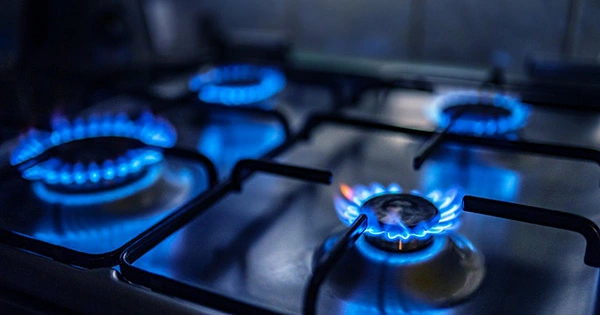Cooks adore their appliances, from instant-read thermometers to countertop slow cookers. Magnetic induction cooktops, which cook considerably more quickly than conventional stoves without lighting a flame or heating an electric coil, are currently gaining popularity.
This attention is overdue in some cases: Since induction uses less energy than conventional stoves, it has long been a favorite in Europe and Asia. However, recent studies have also prompted worries about the gas stoves’ indoor air pollutants.
According to academic studies and government organizations like the California Air Resources Board, gas stoves can emit dangerous air pollutants both when they are in use and when they are not.
I have taken part in studies that evaluated indoor air pollution and constructed models to forecast how indoor sources will contribute to air pollution in various home types as an environmental health researcher who also researches housing and indoor air. Here are various perspectives on how gas stoves can impact indoor air quality and whether you should think about switching to another type of stove.
Nitrogen dioxide, sometimes known as NO2, is a byproduct of fuel combustion and one of the main air pollutants frequently linked to using gas stoves. Children’s use of rescue inhalers and more severe asthma have both been linked to indoor nitrogen dioxide exposure. Adults who have asthma may also be impacted by this gas, which also plays a role in the onset and progression of chronic obstructive pulmonary disease.
Both indoor and outdoor sources contribute to the nitrous oxide that is found in homes. The main outdoor source is traffic, and it should come as no surprise that levels are higher along busy roads. The largest indoor source is frequently a gas stove, with larger, longer-running burners contributing more.
According to the gas business, gas stoves only contribute a small amount of indoor air pollution. With regard to exposures averaged across months or years, this is true in some homes.
However, there are many residences where nitrogen dioxide levels are increased indoors more by gas stoves than by pollution from outside, particularly during short-term “peak” exposures when cooking. For instance, a study in Southern California found that indoor emissions were mostly to blame for the almost 50% of residences that exceeded a health limit based on the peak hour of nitrogen dioxide concentrations.
How can a single gas burner increase your exposure more than a whole motorway full of cars? The difference between interior and outdoor pollution is that the latter concentrates in a smaller area.
The design of your home influences the amount of indoor pollution you receive from a gas stove, thus some people have higher than average exposures to NO2 inside. People who live in larger, properly ventilated homes with working range hoods that vent to the outside and good general ventilation will be less exposed than those who live in smaller, inadequately vented homes.
Hazardous air pollutants and methane
Gas stoves emit a number of pollutants, not just nitrogen dioxide. Even when stoves are not in use, certain pollution that may have an effect on both human health and the climate of the Earth still exists.
According to a 2022 study, methane, the primary component of natural gas and the colorless, odorless gas that U.S. gas stoves exhale when not in use, retains as much heat in the atmosphere as about 400,000 cars.
Some of these leaks might not be discovered. The smell of natural gas may not be strong enough for households to detect small leaks, despite the fact that gas distributors add an odorant to it to ensure that people will sense leaks before there is a risk of an explosion.
Additionally, some people have significantly sharper senses of smell than others. People who have lost their ability to smell, whether due to COVID-19 or other factors, may not be able to detect even big leaks. According to a recent research, 5% of homes had leaks that the owners had not noticed but were significant enough to need fixing.
The same study found that natural gas leaks contained a variety of dangerous air contaminants, including the cancer-causing substance benzene. Even though measured levels of benzene did not exceed alarming levels for health, the presence of these dangerous air pollutants could be an issue in houses with significant leaks and inadequate ventilation.
Health and climate are two reasons to change
What should you do if your home has a gas stove, and when should you be concerned? Start by making any improvements you can to ventilation, such as using a range hood that vents outside and opening the kitchen windows while cooking. Exposures will be reduced, but not entirely, especially for family members who are in the kitchen while cooking.
Even with sufficient ventilation, exposures may still be of concern if you live in a smaller house or one with a smaller closed kitchen and if someone in your house has a respiratory condition like asthma or chronic obstructive pulmonary disease. This exposure would be removed by switching to a magnetic induction cooktop, which would also benefit the environment.
Given the significance of switching to gas stoves for reducing climate change, there are numerous incentive programs to assist this transition. For instance, the Inflation Reduction Act of 2022, just passed into law, provides incentives for the purchase of high-efficiency electric appliances like stoves and has various provisions to address climate change.
To hasten the shift away from fossil fuels, many of American communities have passed or are considering passing laws that prohibit natural gas hookups in newly constructed homes after certain dates. At least 20 states have passed legislation or rules that forbid banning natural gas at the same time.
It’s crucial to stop using gas stoves if you want to take advantage of incentives, save money on energy, or lessen your carbon footprint and are investing in home energy saving measures. If households don’t also improve kitchen ventilation, some weatherization measures can restrict air leakage to the outside, which can increase indoor air pollution concentrations.
In my opinion, the chance to have cleaner air inside your home may be a strong reason to make the transition, even if you’re not motivated to lessen your carbon footprint or you’re just looking for ways to cook pasta faster.
















